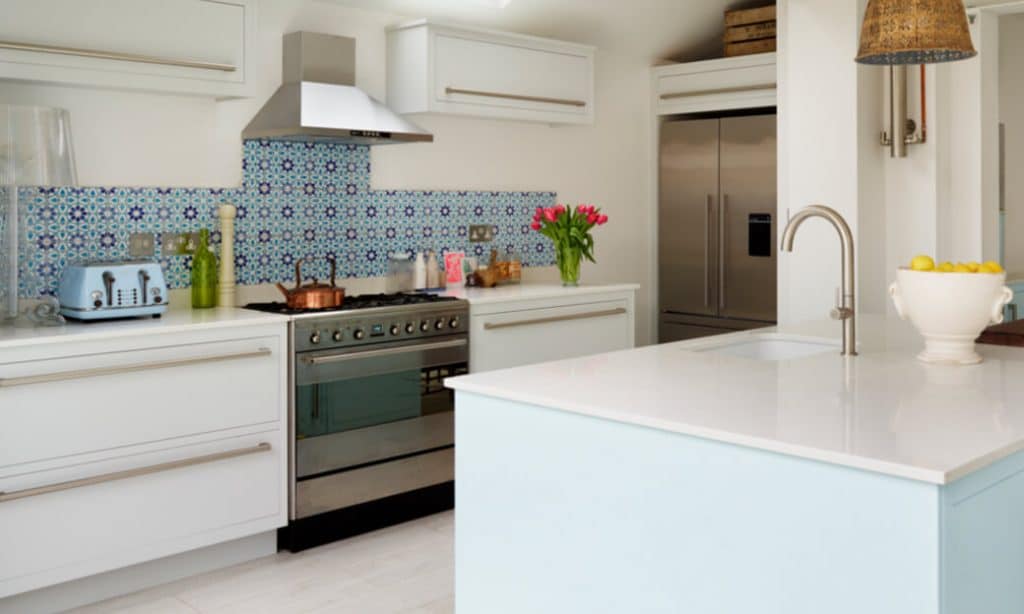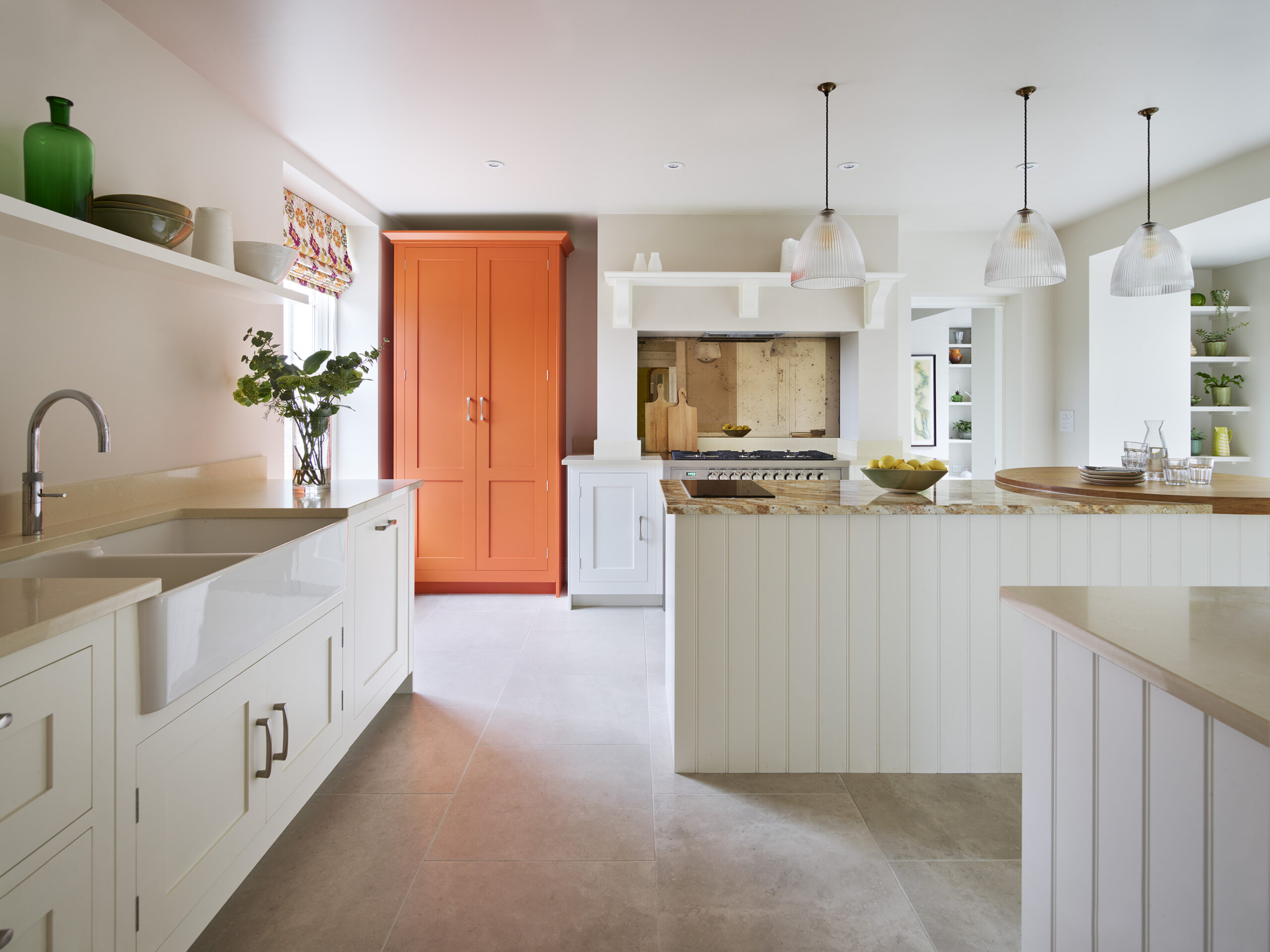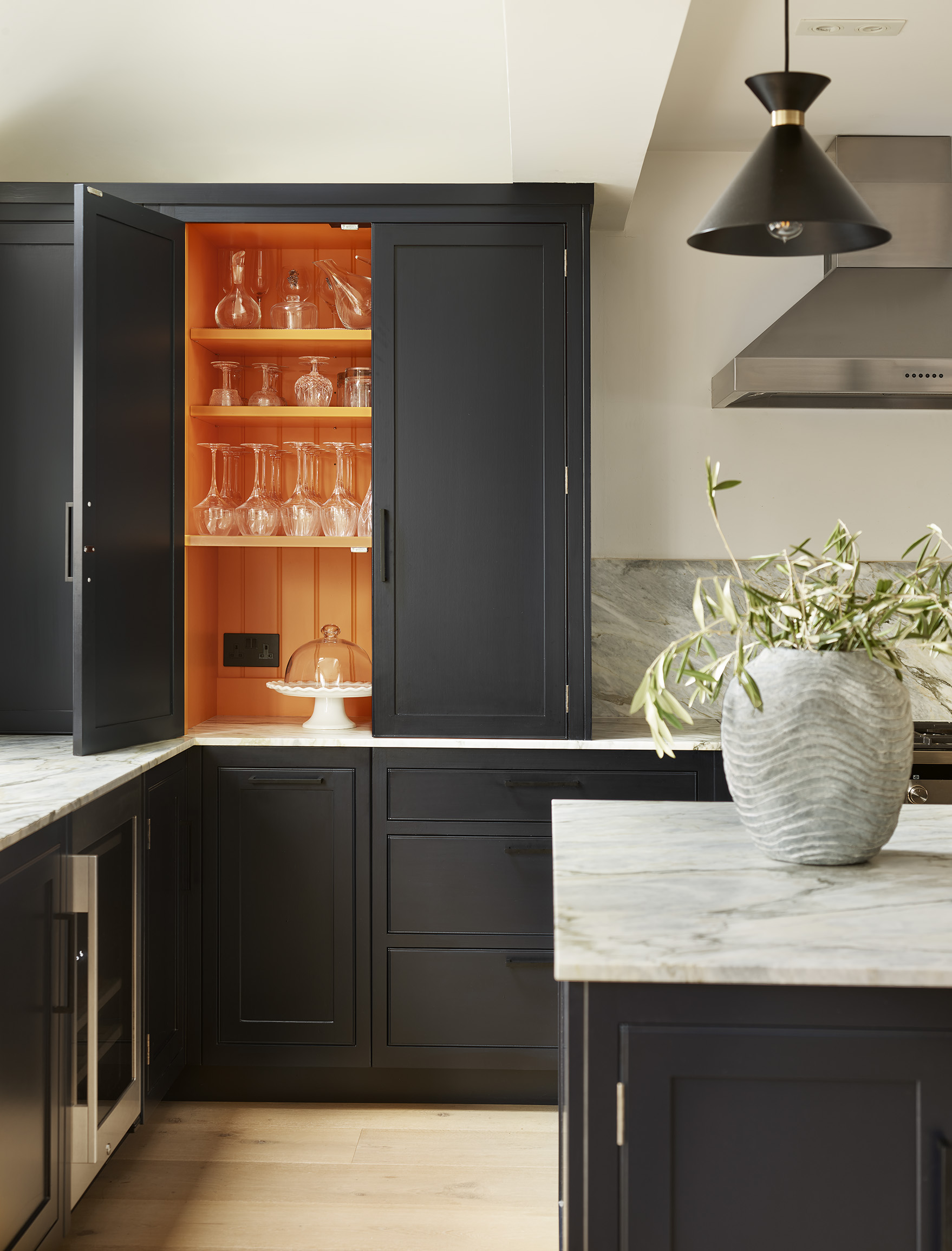
Planning a new kitchen design is an exciting project, but there are a lot of decisions and choices to be made. When faced with these, you may encounter a number of technical phrases and terms that you might be unfamiliar with. To help, we have produced a short glossary with explanations of some of the key terms used in the design, production and installation of handmade kitchens.

Built-In
Appliances that are built into a cupboard to form a ‘bank’.
Built-under
Appliances that are built into cabinets below the worktop. They are normally used to accommodate undercounter fridges, dishwashers and wine coolers.
Blind-End Cabinet
A base cabinet which is usually incorporated into a design to turn a corner. Another cabinet will be fitted adjacent to it to hide the ‘blind’ section. This gives access to an otherwise dead corner providing more storage space for the user.
CAD
CAD stands for computer aided design. This is a technical drawing system we use to produce plans and views of our kitchen designs for our clients.
Composite Worktops
Composite Worktops are man-made worksurfaces and come in two main types; Quartz-based composites which are engineered using natural quartz crystals that are bonded together with special resins and solid surface composites which are produced using a man-made acrylic or polyester material. Both types of composites offer the same main benefits. You can read more here.
Cornice
A cornice is a horizontal decorative moulding that is fitted to the top of wall cabinets. We offer several different options.
Cut Outs
These are the holes that are made in worksurfaces to accommodate sinks, hobs and other appliances.

Dovetail
A traditional carpentry technique used to join together two pieces of timber. Both pieces have wing-shaped notches that interlock. Dovetailed joints are known as one of the strongest types of joint and have been used for many years in the production of high-quality furniture. All of our oak drawer boxes have dovetail joints front and back.
End Panel
The visible panel forming the cabinet side at the end of a run of cupboards. We offer end panels in a plain finish and in timeless tongue and groove, and also in a curved finish for a more modern look. Each of these can be painted in any colour you choose.
In-Frame Cabinets
A method of furniture construction in which the cabinet door sits within a frame. The frame is then joined to the cabinet behind it. Here at Harvey Jones, we attach our hardwood doors to a hardwood frame using butt hinges. This wood-to-wood bond is immensely strong, and gives our kitchens real longevity. Read more here.
Integrated
Appliances that are built into cupboards and concealed behind cabinet doors to give a streamlined look.
Magic Corner
One of the storage mechanisms we offer to make the most of a corner in a kitchen. The mechanism is mounted to the door and gives easy and practical access to pots and pans when the door is opened. We offer an array of options like this, so don’t hesitate to speak with one of our designers for more information.
Mortise and Tenon
A traditional jointing technique that has been used in high-quality furniture production for many years. The mortise (groove or slot) is cut into a piece of wood. The joint is made when an opposing piece cut with a tenon (a collared protrusion) is slipped into the mortise. We use mortise and tenon joints to make our Shaker doors.
Pilaster
In kitchen design, a pilaster is a decorative element that gives the appearance of a supporting leg – often on an island or the end of a run of cabinets. We offer pilasters in both oak and primed finishes.
Plinth (also known as ‘kick plate’)
The panel that runs below the cupboards. We offer the options of a recessed plinth which is set back from the front of the cabinets making it easier to stand closer to the work surface, and an external plinth which gives the appearance of freestanding furniture.
Primed
Our ’primed for painting’ kitchens arrive with you having been expertly primed with two coats of tough white undercoat. This provides a hardwearing base layer onto which our expert painters can apply the top coat colour of your choice. See more about our painted kitchens.

Splashback (also known as ‘backsplash’)
A material or feature that protects walls from splashes and water damage. They are often used around sinks and hobs, and also as features to introduce colour or an additional material (like glass or stainless steel) into the overall scheme. Upstands can also be used to create splashbacks.
Upstand
A continuation of the work surface material, running up the sides of your worktop.
Our kitchen design experts are on-hand to help with any further information you require. Click here to find your nearest showroom, or request your free brochure here.





